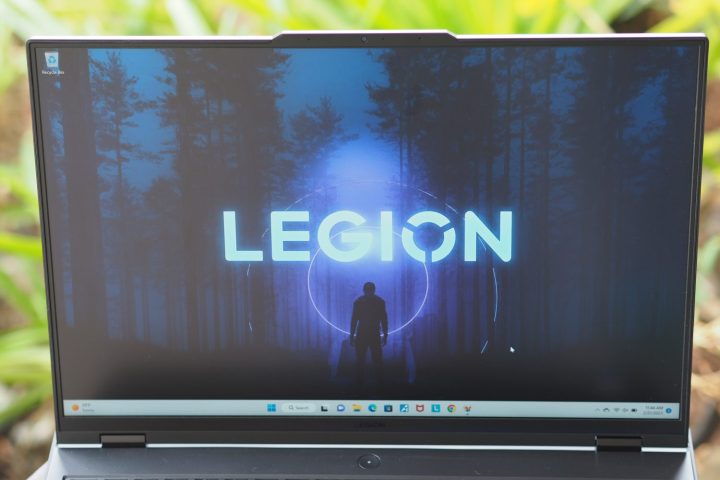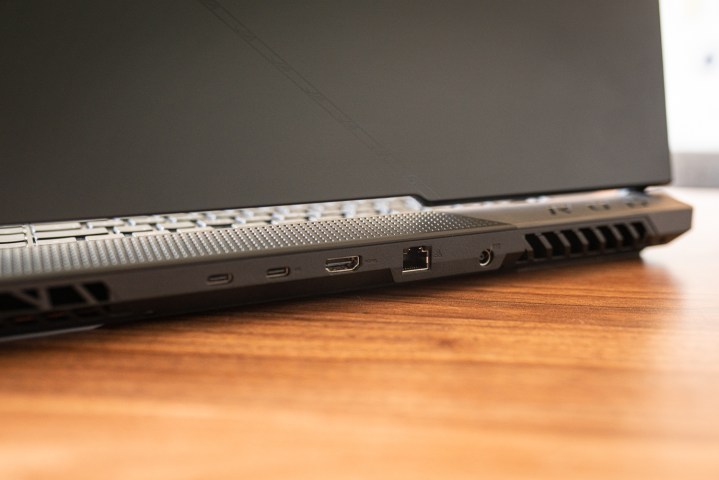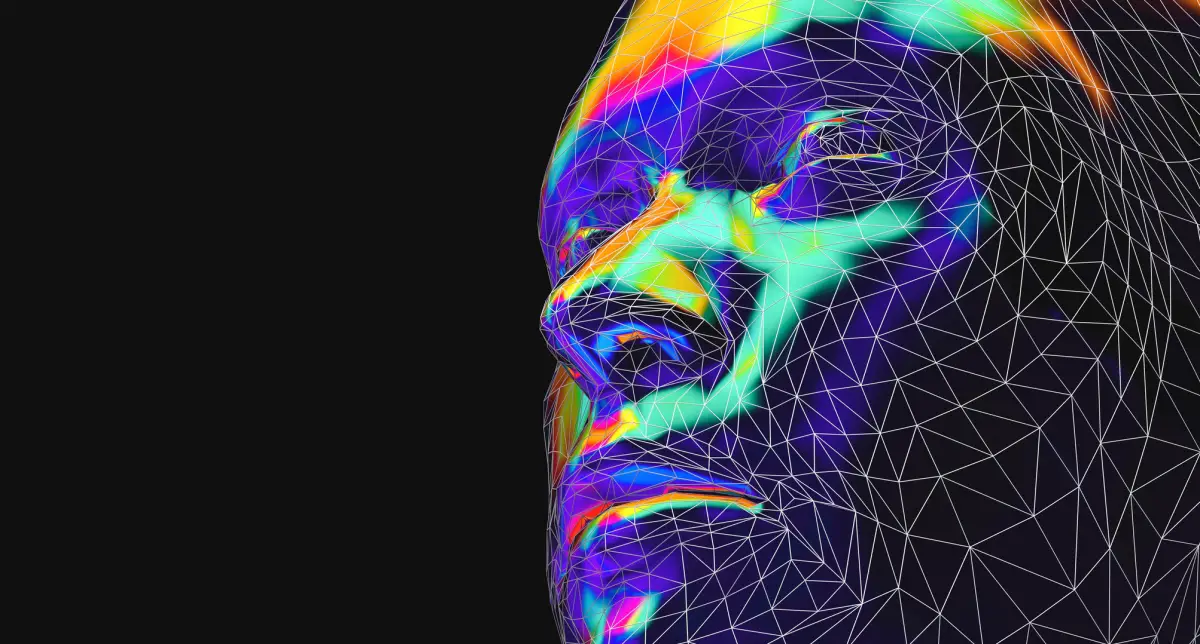So far, 2023 has been a good year for gaming laptops. We’re getting next-gen CPUs like Intel’s 13th-gen Raptor Lake and AMD’s Ryzen 7000 series, to go with Nvidia’s GeForce 40 series GPUs. And that’s not to mention the impressive new mini-LED displays hitting the market.
The Lenovo Legion Pro 7i and Asus Strix Scar 17 are two gaming machines that stick with IPS displays but pack in the latest components otherwise. It’s an Intel versus AMD battle as well, showing off two of the fastest processors you can get in a laptop today. But which is the better choice?
Specs and configurations
| Lenovo Legion Pro 7i | Asus Strix Scar 17 | |
| Dimensions | 14.3 inches x 10.32 inches x 0.86 – 1.01 inches | 15.55 x 11.1 x 0.92 inches |
| Weight | 6.17 pounds | 6.61 pounds |
| Processor | Intel Core i9-13900HX | AMD Ryzen 9 7945HX |
| Graphics | Nvidia GeForce RTX 4070 Nvidia GeForce RTX 4080 Nvidia GeForce RTX 4070 |
Nvidia GeForce RTX 4080 Nvidia GeForce RTX 4090 |
| RAM | 32GB DDR5-6000MHz | 32GB DDR5-4800 |
| Display | 16.0-inch 16:10 QHD+ (2560 x 1600) IPS, 240Hz | 17.3-inch 16:9 QHD (2560 x 1440) IPS, 240Hz |
| Storage | 1TB PCIe 4.0 SSD | 2TB PCIe 4.0 SSD |
| Ports | 4 x USB-A 3.2 Gen 1 1 x USB-C 3.2 Gen 2 1 x USB-C with Thunderbolt 4 1 x HDMI 2.1 1 x Ethernet RJ45 1 x 3.5mm audio jack |
2 x USB 3.2 Gen 2 Type-C 2 x USB 3.2 Gen 1 Type-A 1x HDMI 2.1 1 x 2.5G Ethernet 1 x 3.5mm audio |
| Wireless | Wi-Fi 6E and Bluetooth 5.1 | Wi-Fi 6E and Bluetooth 5.2 |
| Webcam | 1080p | 720p |
| Operating system | Windows 11 | Windows 11 |
| Battery | 99.9 watt-hours | 90 watt-hours |
| Price | $1,999 | $3,500 |
| Rating | 4 out of 5 stars | 4.5 out of 5 stars |
There was just one configuration of the Legion Pro 7i available when we reviewed the unit, a $2,750 configuration with a Core i9-13900HX, 32GB of RAM, a 1TB PCIe SSD, a 16.0-inch QHD+ IPS display at 240Hz, and an Nvidia GeForce RTX 4080. Since then, Lenovo has expanded its offerings, and the laptop now starts at $2,000 for the same CPU, storage, and display, but with just 16GB of RAM and an RTX 4070. You can add a second 1TB SSD and upgrade to an RTX 4090 for $3,565.
The Asus Strix Scar 17 has two configurations, with the entry-level machine running $2,900 for an AMD Ryzen 9 7945HX CPU, 32GB of RAM, a 2TB SSD, a 17.3-inch QHD IPS panel at 240Hz, and an RTX 4080. You’ll spend $3,500 to configure with an RTX 4090, making it almost the same price as the Lenovo at the high end.
The Legion Pro 7i gives you a much more affordable option when configured with the RTX 4070 and less RAM, but the two laptops are similarly priced with the same components.
Design
One notable distinction between the Legion Pro 7i and the Strix Scar 17 is in their construction. The former is made from all aluminum while the latter is all plastic. That gave the Legion Pro 7i an edge in terms of its overall sense of rigidity and quality feel. It’s not that the Asus felt cheap, but it’s hard to make a laptop with just plastic and achieve the same perception of solidity.
The other difference is in their aesthetics. The Legion Pro 7i has a conservative design that only nods to gamers with its per-key RGB keyboard lighting and “U” RGB lighting strip that runs across the front bottom of the chassis. The Strix Scar 17 has the same two features, plus its chassis has a few gamer-oriented angles. It’s just a slightly more ostentatious design, but really, both laptops would be fine to use in a corporate environment if you turned off the RGB lighting.
The Strix Scar 17 is naturally wider and deeper than the Legion Pro 7i, given its 17.3-inch display versus the latter’s 16-inch panel. But it’s also not quite as thick and it’s just half a pound heavier than the Lenovo. That’s thanks to the plastic chassis.
Both laptops have comfortable keyboards, with the Asus using membrane switches and the Lenovo using the company’s TrueStrike keyboard. Both are comfortable for both gaming and traditional typing, and both offer per-key RGB lighting. Both touchpads are equally small for the laptops’ sizes, but both are comfortable to use. Of course, you’ll likely opt for a gaming mouse.
Connectivity favors the Legion Pro 7i. Not only does it have more ports, including twice as many USB-A ports, but it also includes Thunderbolt 4 support that the Strix Scar 17 lacks thanks to its AMD chipset. Both use the latest in wireless connectivity.
The Legion Pro 7i also has a superior 1080p webcam, while the Strix Scar 17 is limited to just a 72op version. Neither has infrared cameras for facial recognition, and neither has a fingerprint reader. So, no Windows 11 Hello passwordless login with either machine.
Performance

The Legion Pro 7i equips Intel’s 55-watt Core i9-13900HX CPU, which features 24 cores (eight Performance at 5.4GHz and 16 Efficient at 3.9GHz) and 32 threads. It’s a high-speed CPU that churned through our performance benchmarks. The Strix Scar 17 uses AMD’s Ryzen 9 7945HX, a 55-watt processor with 16 cores and 32 threads running at up to 5.4GHz. The Legion Pro 7i used an Nvidia GeForce RTX 4080, while the Strix Scar 17 enjoyed an RTX 4090.
The Strix Scar 17 led most of our benchmarks, and notably, its single-core performance in Geekbench 5 was faster than many past AMD CPUs that mostly excelled in multi-core tests. Where the Asus fell behind was in the Pugetbench Premiere Pro benchmark that runs in a live version of Adobe’s Premiere Pro, which can use the GPU to speed up various tasks. The Legion Pro 7i achieved the highest scores in this benchmark among all the laptops we’ve tested, likely due to some Intel optimizations in Playback that inflated that portion of the test results. The Asus was faster in the Export and GPU effects portions of the test, so it’s not necessarily clear which laptop would provide the best overall creativity performance.
Nevertheless, both are incredibly speedy laptops for the most demanding productivity and creative workflows. You can’t go wrong with either.
| Lenovo Legion Pro 7i (Core i9-13900HX) |
Asus Strix Scar 17 (Ryzen 9 7945HX) |
|
| Geekbench 5 | Bal: 2,020 / 19,041 Perf: 1,951 / 20,694 |
Bal: 2,112 / 19,205 Perf: N/A |
| Handbrake (seconds) |
Bal: 55 Perf: 51 |
Bal: 44 Perf: N/A |
| Cinebench R23 (single / multi) |
Bal: 2,096 / 22,596 Perf: 2,046 / 28,263 |
Bal: 1,940 / 31,661 Perf: N/A |
| Pugetbench Premiere Pro | Bal: 1,310 Perf: 1,441 |
Bal: 1,103 Perf: 1,170 |
Gaming performance was just slightly mixed, with the Strix Scar 17 dominating in the 3DMark Time Spy benchmark, Assassin’s Creed Valhalla, and Red Dead Redemption 2. It couldn’t keep up with the Legion Pro 7i in Cyberpunk 2077, however. Overall, the Strix Scar 17 is the faster gaming laptop with its RTX 4090 GPU, but both laptops can handle 1440p gaming at high frame rates and with graphics turned up. Note that the Legion Pro 7i can also be configured with an RTX 4090, so it’s likely that if you spend the same money, you’ll get equal or maybe even slightly better gaming performance from the Lenovo.
| Lenovo Legion Pro 7i (Nvidia GeForce RTX 4080) |
Asus Strix Scar 17 (Nvidia GeForce RTX 4090) |
|
| 3DMark Time Spy | Bal: 12,874 Perf: 18,071 |
Bal: 18,690 Perf: 19,009 |
| Cyberpunk 2077 (1080p Ultra) |
Bal: 114 fps Perf: 113 fps |
Bal: 101 fps Perf: 103 fps |
| Assassin’s Creed Valhalla (1080p Ultra High) |
Bal: 125 fps Perf: 129 fps |
Bal: 156 fps Perf: 160 fps |
| Red Dead Redemption 2 (1440p Ultra) |
Bal: 71 fps Perf: 99 fps |
Bal: 115 fps Perf: 121 fps |
Display

Both gaming laptops are limited to IPS panels, with the Legion Pro 7i using the more productivity-friendly 16:10 aspect ratio with its QHD+ 16.0-inch display. That makes it sharper than the old-school 17.3-inch 16:9 QHD display on the Strix Scar 17. Both run at up to 240Hz.
The Legion Pro 7i’s display was brighter with slightly better contrast and more accurate colors, while the Strix Scar 17 had wider colors. Neither display is impressive compared to OLED and mini-LED options, but both are serviceable. We’ll give the nod to Lenovo for higher sharpness and brightness, which is more likely to matter to gamers. Creators will want to look elsewhere or use an external display for their most color-sensitive work.
| Lenovo Legion Pro 7i (IPS) |
Asus Strix Scar 17 (IPS) |
|
| Brightness (nits) |
529 | 330 |
| AdobeRGB gamut | 77% | 87% |
| sRGB gamut | 100% | 100% |
| Accuracy (DeltaE, lower is better) |
0.62 | 0.95 |
| Contrast ratio | 1,140:1 | 980:1 |
Portability

Both laptops are large and heavy, meaning they’re not meant to be carried around from coffee shop to coffee shop. Rather, you’ll pick them up and move them from one gaming location to another.
Also, as gaming laptops, battery life is limited. Neither will get you more than a couple of hours of work done, let alone gaming. Be prepared to carry large power bricks around with you, adding to the already significant weight.
The Strix Scar 17 barely wins out thanks to its faster performance
These are both excellent gaming laptops that will provide outstanding productivity, creativity, and gaming performance. When equally configured, they’ll likely provide nearly equal performance, with the Asus having just a slightly faster CPU that you won’t notice in real-world use.
Since they’re both similarly priced, it’s hard to pick a winner. The Legion Pro 7i’s display is sharper and brighter, but it’s also smaller. The Strix Scar 17 has a more gamer-oriented aesthetic, which can be a good or a bad thing. We’ll give the Asus the tiniest nod for its overall performance, but you can’t go wrong with either laptop.
Editors’ Recommendations
Source link










Leave a Reply